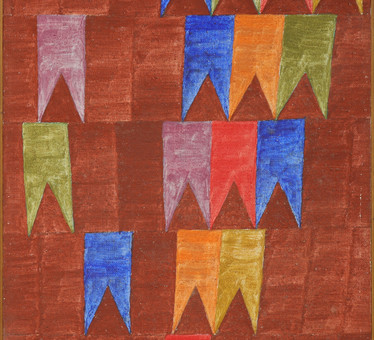Alfredo Volpi

Lucca, Italy, 1896 —
São Paulo, Brazil, 1988
Alfredo Volpi’s work is a synthesis of the achievements of modern art in Brazil and, simultaneously, its overtaking. In the 1930s, Volpi approached the Santa Helena Group, looking for subjects in the streets for his paintings, be it landscape, human figure or everyday scenes. From the 1940s onwards, his canvases went through a process of simplification of form, abandoning traditional resources for building the spatial illusion, such as perspective or shading. The composition and invoice become more important than the subject, which opens a phase, in the 1950s, of research with space and planarity, figure and background, in which the architectural elements, which were previously figurative, are assumed increasingly as geometry.
The technique of painting with tempera produces a diaphanous atmosphere on the surface of the canvases, which softens the rectangles and lozenges, even in the late 1950s, when the artist exhibits with the concretist group, without however abandoning the appreciation for craftsmanship, since the making. from the chassis of your canvases to the appreciation for the visible brushstroke.
In fact, the whitish paint of the tempera gives the surface of the painting a certain porosity, as if the wind or the time passed through his paintings, linking Giotto’s pre-Renaissance frescoes to Brazilian modernism and continuing to our contemporary painting, which is in Volpi a “new” one to turn to whenever you need a breath.
